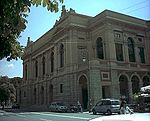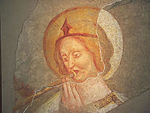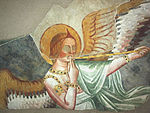Bergamo

Bergamo (Italian: [ˈbɛrɡamo] ; Bergamasque: Bèrghem [ˈbɛrɡɛm] ) is a city in the alpine Lombardy region of northern Italy, approximately 40 km (25 mi) northeast of Milan, and about 30 km (19 mi) from Switzerland, the alpine lakes Como and Iseo and 70 km (43 mi) from Garda and Maggiore. The Bergamo Alps (Alpi Orobie) begin immediately north of the city. With a population of around 120,000, Bergamo is the fourth-largest city in Lombardy. Bergamo is the seat of the Province of Bergamo, which counts over 1,103,000 residents (2020). The metropolitan area of Bergamo extends beyond the administrative city limits, spanning over a densely urbanized area with slightly less than 500,000 inhabitants. The Bergamo metropolitan area is itself part of the broader Milan metropolitan area, home to over 8 million people.The city of Bergamo is composed of an old walled core, known as Città Alta ("Upper Town"), nestled within a system of hills, and the modern expansion in the plains below. The upper town is encircled by massive Venetian defensive systems that are a UNESCO World Heritage Site since 9 July 2017.Bergamo is well connected to several cities in Italy, thanks to the motorway A4 stretching on the axis between Milan, Verona, and Venice. The city is served by Il Caravaggio International Airport, the third-busiest airport in Italy with 12.3 million passengers in 2017. Bergamo is the second most visited city in Lombardy after Milan.
Excerpt from the Wikipedia article Bergamo (License: CC BY-SA 3.0, Authors, Images).Bergamo
Piazza Vittorio Veneto, Bergamo Finazzi
Geographical coordinates (GPS) Address Nearby Places Show on map
Geographical coordinates (GPS)
| Latitude | Longitude |
|---|---|
| N 45.695 ° | E 9.67 ° |
Address
Piazza Vittorio Veneto 11
24122 Bergamo, Finazzi
Lombardy, Italy
Open on Google Maps








